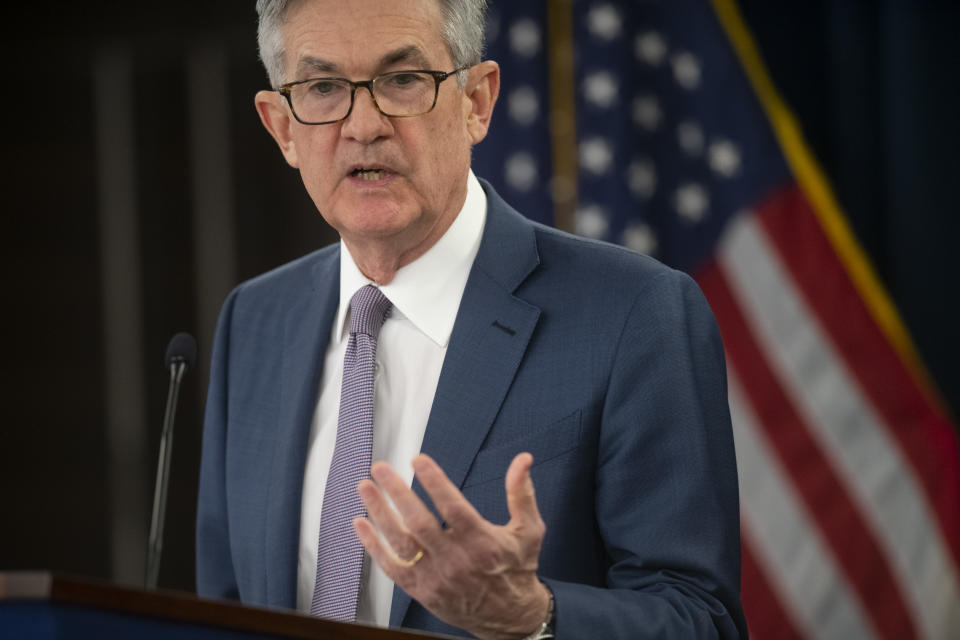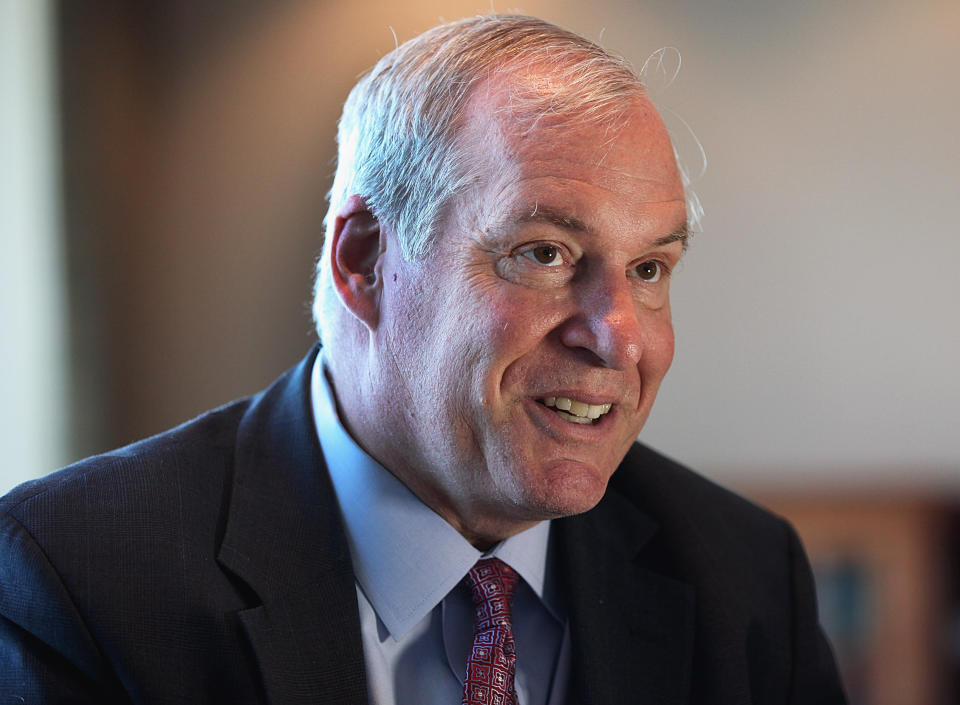The Fed needs to bail out the real economy — not big banks
Plunging stock markets, bond yields, and oil prices are creating a perfect storm of adverse conditions sure to impose severe damage on the real economy. Nervous markets are particularly focused on corporate credit markets.
Borrowing by non-financial companies has reached historic highs as companies have gorged on cheap credit and easy borrowing terms to goose shareholder returns. The prospect of widespread defaults in the debt-laden corporate sector is the weakest link in our fragile global economy, which is even more highly leveraged than the one which imploded during the 2008 financial crisis.
Will the banking system hold up? Optimists point to the significantly higher levels of capital that exist today in the banking system as compared to 2008. Yet, the fact that capital is twice as high as it was during those go-go years does not mean it is high enough. Under current rules, banks are still allowed to borrow 94 cents for every dollar of their funding. Even if bank capital is sufficient to keep the system afloat, will the biggest banks have the balance sheet capacity to continue lending? Indeed, to address the needs of the real economy, they will need to expand their balance sheets to take up the slack as corporate bond markets seize up.
Simply keeping the banking system solvent will not be sufficient to meet the economy’s needs, particularly if the banks retrench on credit, withholding loans to all but the most creditworthy, as they did during the financial crisis.
Bank-centric bailouts don’t work
In recent years, the Fed has been repeatedly urged to raise bank capital requirements through something called a Countercyclical Capital Buffer (CCyB). The CCyB is designed to increase capital levels toward the end of an economic cycle. This helps constrain debt-driven asset bubbles and also gives banks excess capital to release in a downturn so that they can expand credit when the economy needs it the most. But the Fed has repeatedly refused to invoke the buffer, while allowing banks, on average, to deplete their capital levels through shareholder payouts that exceed their earnings.

Last week, with astonishing timing, the Fed finalized new capital rules which would weaken bank capital further, including a change which would reduce Tier 1 capital — one of three key capital metrics — by $100 billion. As a rule of thumb, $1 of Tier 1 capital supports roughly $16 of borrowing. Thus, if banks decide to distribute this $100 billion to shareholders, they could reduce their lending capacity by $1.6 trillion. Notably, as part of this rulemaking, the Fed will no longer require banks to have sufficient capital to expand lending during economic stress, one of the reasons why big banks’ capital minimums dropped.
The Fed could still reverse course, invoke the CCyB and apply it to this year’s round of stress testing. This would keep banks from distributing that excess capital. Yet, economic turmoil is already upon us. Such measures will help, but will be too little, too late. The Fed could, of course once again, pump bailout money into banks, hoping it will flow through to the real economy. This was the approach we used in 2008.
But while some banks did a better job supporting lending than others, for the most part, bailout funds did not support the real economy. They primarily propped up the irresponsible financial behemoths who caused the crisis and who were teetering on the edge of insolvency. Indeed, the banks were paying their executives big bonuses by the end of 2009, even as the rest of the economy struggled in the depths of severe recession. It took nearly 10 years for the so-called recovery to trickle down to middle- and low-income working families. Bank-centric bailouts don’t work.
An essential alternative to bank credit
Another option would be for the Fed to seek authority from Congress to buy the bonds of non-financial companies, as suggested by Eric Rosengren, the President of the Reserve Bank of Boston, last week. By doing so, the Fed would be able to keep corporate bond markets functioning and accessible to solvent companies in sectors hit hardest by the fallout from coronavirus, including energy, transportation, hospitality, and retail. This would help give such companies access to sufficient funding to stay in business, directly mitigating the risk of widespread layoffs and cascading bankruptcies. It will also give them an essential alternative to bank credit, if big banks are unwilling or unable to lend to them, as was the case in 2008. This direct support to the real economy would be markedly different from the 2008 “playbook” when the Fed’s bond purchases were confined to Treasuries and GSE mortgage securities. These were purchased from big bank intermediaries which kept the funds locked up in their own, interest-bearing reserve accounts at the Fed.

What we learned from the last crisis is that bank bailouts help banks, not the rest of us. If the Fed has to step in — and it will — it should provide help directly to the real economy. For that matter, depending on how bad this gets, the Fed might also consider ginning up its printing presses to provide assistance to working families. Radical? Yes. But why would this measure be any more objectionable than the Fed using its printing press for the 2008 bank bailouts, or its continuing practice of printing money to pay big banks interest on their reserves?
To be clear, I suggest such drastic measures with trepidation. Indeed, I have long argued that the Fed is too involved in our economy, trying to manipulate growth through aggressive monetary policy. I would like the Fed to extricate itself. Ultra-low interest rates create bubbly financial markets, and bubbly financial markets react violently on bad news. Witness the extreme volatility we are now experiencing, including Monday’s 2,000 point drop in the Dow.
Unfortunately, we are where we are, with not a lot of good options. So if we are going to have more bailouts, please, let’s bail out the real economy, and let the big banks fend for themselves.
Sheila Bair is the former Chair of the FDIC and has held senior appointments in both Republican and Democrat Administrations. She currently serves as a board member or advisor to a several companies and is a founding board member of the Volcker Alliance, a nonprofit established to rebuild trust in government.
Read more:
Mike Bloomberg has done an about-face on Wall Street reform
Low-income Americans need more wealth, not more debt
Why student loan forgiveness should target graduates who need it the most
Why the Fed should oversee Facebook’s Libra
How regulators can stop leveraged lending from becoming the new subprime
The $1.4 trillion student loan market faces a huge issue — transparency
Follow Yahoo Finance on Twitter, Facebook, Instagram, Flipboard, SmartNews, LinkedIn, YouTube, and reddit.
